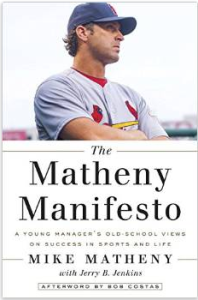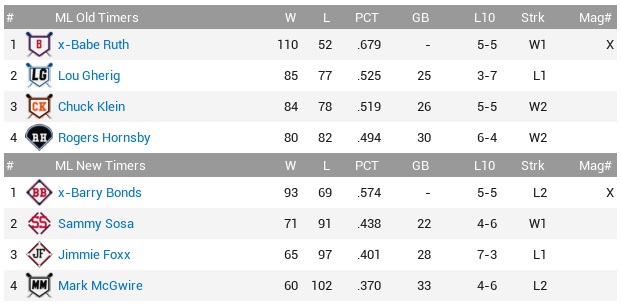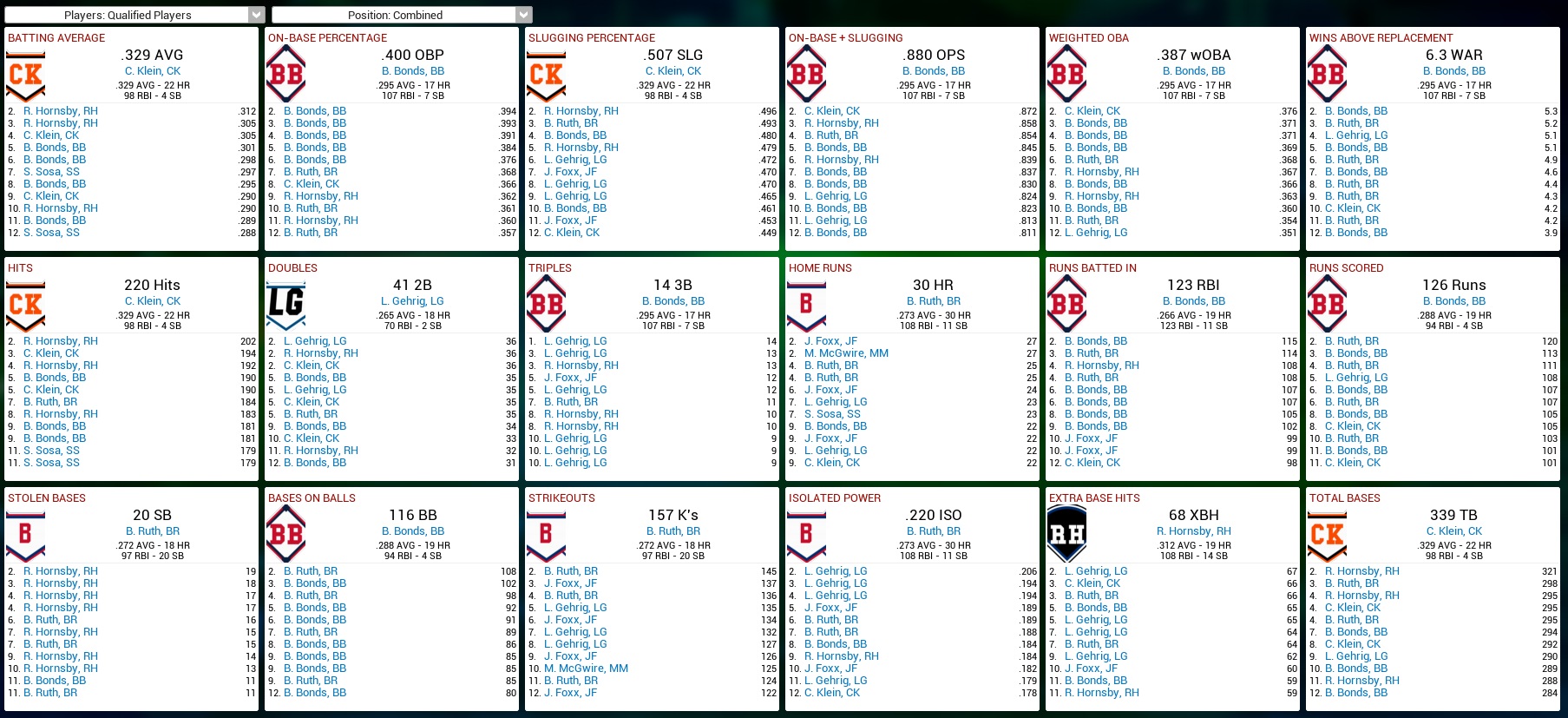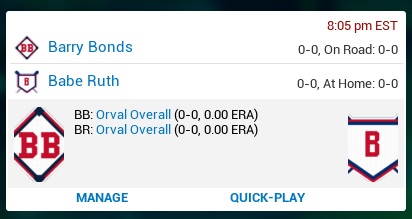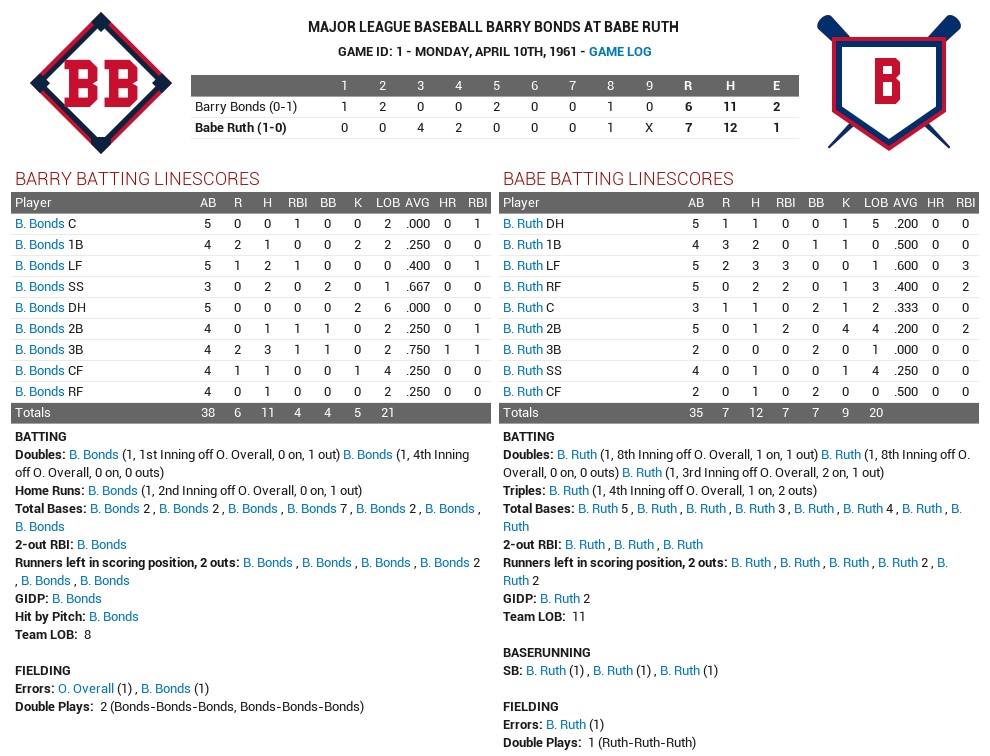Previously we posted on the setup of our league pitting the all-time greatest single seasons for batters against one another and on the outcome of the regular season. 1921 Babe Ruth and 2001 Barry Bonds both ran away with their respective divisions and were set to face each other in a 9-game World Series to determine who had the greatest single season of all time.
Ruth was confident going in, having gone 17-7 against Bonds during the regular season outscoring him 151-107. Ruth also finished the season 17 games better than Bonds, going 110-52 compared to 96-69 for Bonds.
Game 1 at Yankee Stadium continued the trend as in the bottom of the 2nd Ruth took advantage of five walks from Orval Overall and an error by Bonds trying to play catcher to take a 4-0 lead. However Barry hit a solo shot in the 3rd and played small ball in the 4th scoring three on a walk, four singles, and a sac fly to tie it up. Ruth regained the lead singling in a run in the bottom of the 4th.
That lead held until the 8th when Bonds doubled, tripled, and hit another sac fly to take a 6-5 lead. Ruth answered in the bottom of the 8th seemingly blowing the game open hitting five singles and working three walks to score 5 times to take a 10-6 lead going into the 9th.
But in the top of the 9th, Barry loaded the bases and hit a seeing eye single(likely due to Ruth’s limited range at both second base and shortstop) to knock in one before a pop out and strikeout left Ruth one out away from taking game one. But Barry wouldn’t go down that easy. A hit-by-pitch and two-run single tied the game up and we went to the bottom of the 9th.
Ruth singled to open the bottom of the 9th, then popped up. An error by Overall put runners on first and second. Ruth then grounded out advancing the runners to second and third with two down. Ruth then knocked a 1-0 pitch over Bonds playing 2nd base to bring in the game ending run to win it 11-10 and take a 1-0 series lead.
Game 2 was just as dramatic and high scoring. Bonds scored four in the top of the first frame but Ruth answered with two of his own. A grand slam highlighted a 7-run 4th for Bonds as he jumped out to a 12-5 lead. Ruth fought back with a 2-run HR of his own in the bottom of the 4th and a solo shot in the 5th. Another solo blast in the 8th made it 12-11.
Bonds went into the bottom of the 9th needing three outs to tie the series, but with one out Ruth again homered to tie the game. Bonds answered in the top of the 10th with his own one out solo shot to take the lead. In the bottom of the 10th, Ruth struck out with the tying run on second, and Bonds escaped with a 13-12 extra inning victory.
Game 3 shifted to San Francisco and also went into extra frames. Ruth hit two homers and went ahead 5-2 but Bonds hit a solo shot in the 7th and scored another in the 8th. In the bottom of the 9th down one, a one out single up the middle knocked in the tying run. It stayed 5-5 until the 11th when a two-run single with one out gave Ruth a 7-5 edge. Bonds got a 2-out single in the bottom of the 11th but that was all, and Ruth took a 2-1 series lead.
Game 4 was a relative pitcher’s duel as both Barry and the Babe combined for only 15 hits. A 6th inning solo blast from Bonds making it 3-2 was the difference as Overall shut down both teams from the 7th through the 9th. The series shifted back to New York all knotted at 2.
Game 5 saw Barry jump out in front first. A four-run 4th highlighted by a 2-run double had Bonds in front 4-0 but a solo blast from Ruth in the bottom of the frame and 2 homers in the bottom of the 8th had Ruth up on top 6-5 going into the 9th. Once more, a 9th inning lead evaporated as Bonds singled himself in to tie it at 6.
In the top of the 11th with two out Bonds scored four times with three walks, two singles, and a double to go up 10-6. While Ruth threatened by putting two on, Overall struck out the side and Bonds had his first series lead.
Thanks to 2-run homers in the bottom of the 1st and 2nd innings, Ruth took a quick 4-0 in the pivotal Game 6. But once again Bonds would not go down easy scoring one in the 3rd and three in the 4th on a single and three doubles to tie it up. Ruth scored once in the 7th and twice in the 8th and held off a 9th inning Bonds rally to win Game 6 7-5 and once again tie the series – now at three games apiece.
Back in San Francisco for Game 7, Ruth once more pulled out in front early going up 4-1 after two innings. And once more Barry came back hitting two homers in the bottom of the 3rd to tie it, then scoring two in the 4th and three more in the 7th to pull away in the first game of the series that wasn’t decided in the later innings. Bonds, who had struggled to beat Ruth all year now found himself one game away from winning it all, and had Game 8 on his home turf.
In Game 8 Ruth continued his early-inning success hitting a 2-run jack in the 1st and a solo blast in the 2nd to go up 3-1. He added another run in the 6th, and while Bonds made it interesting by hitting his own solo shot to lead off the 9th, he could do no more damage, losing 4-2. The series would indeed go the distance.
Back home at Yankee Stadium, Ruth wanted to put the 9th and decisive game away quickly, once again scoring early on. A walk followed by a 2-run blast gave him a 2-0 lead in the bottom of the 2nd. Two more walks, a single and sac fly made it 4-0 after 2. Two doubles made it 5-0 in the 4th, then Bonds botched a routine grounder at second base bringing in a sixth run.
Bonds knew things looked bleak, but as through the whole series, he didn’t give up. He loaded the bases with none out in the top of the 5th and got plunked to bring in a run. A fielder’s choice made it 6-2 but there still was a long way to go.
Ruth stranded himself on third in the bottom of the 5th, and both teams were retired in order in the 6th. Bonds led off the 7th with a walk and lined a single to right-center. Then Bonds again stepped to the plate and blasted the first pitch he saw for a three-run homer to make it 6-5.
Ruth escaped further damage and maintained his one-run lead going to the 9th, just three outs away from being crowned as champion.
Once more Bonds had some late inning heroics. First he lined a 1-0 pitch into left and followed that with a single to center. Bonds then worked a walk and suddenly the bases were loaded with no one out. Bonds then sent the next pitch past the diving glove of Ruth playing first base to bring one in and tie the game. Bonds could do no more though as Overall struck him out and induced two weak popups. A golden opportunity to take the lead was squandered.
That brought up Ruth in the bottom of the 9th. He fouled two pitches off in between looking at two others that were off the plate. He stepped back and pointed to the centerfield bleachers as the crowd came to their feet. On the 2-2 pitch he took probably the hardest swing of his career…and missed. One down.
Ruth’s next at-bat also made it to the same count. On this 2-2 pitch however he connected. The ball went high and deep to the opposite field, 414 feet away from home plate. All 8 Barry Bonds clones playing the field could only stand helplessly and watch and then with heads down make their way to the dugout. Meanwhile the 1921 version of Babe Ruth circled the bases and was mobbed by himself over and over again as he crossed home plate and was crowned with having the greatest single season for a hitter of all time.

